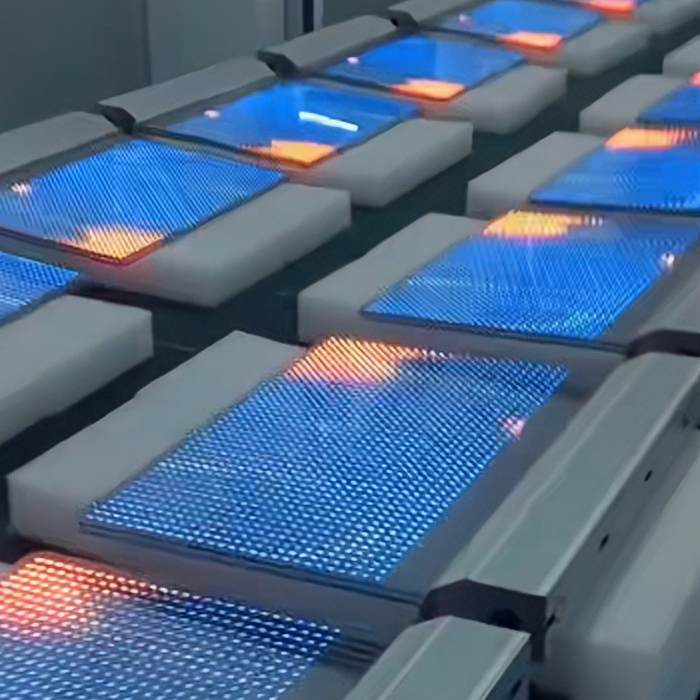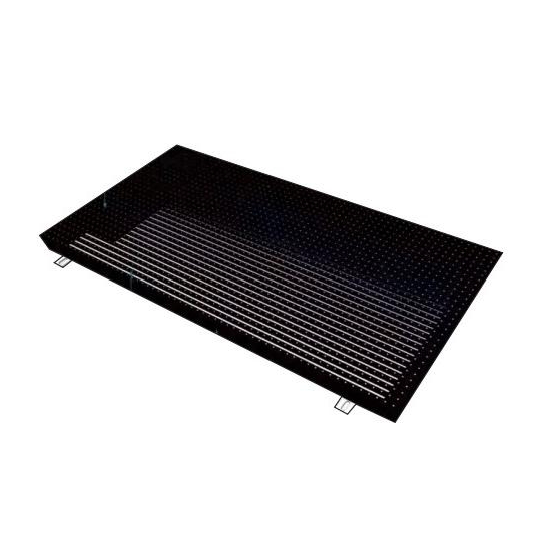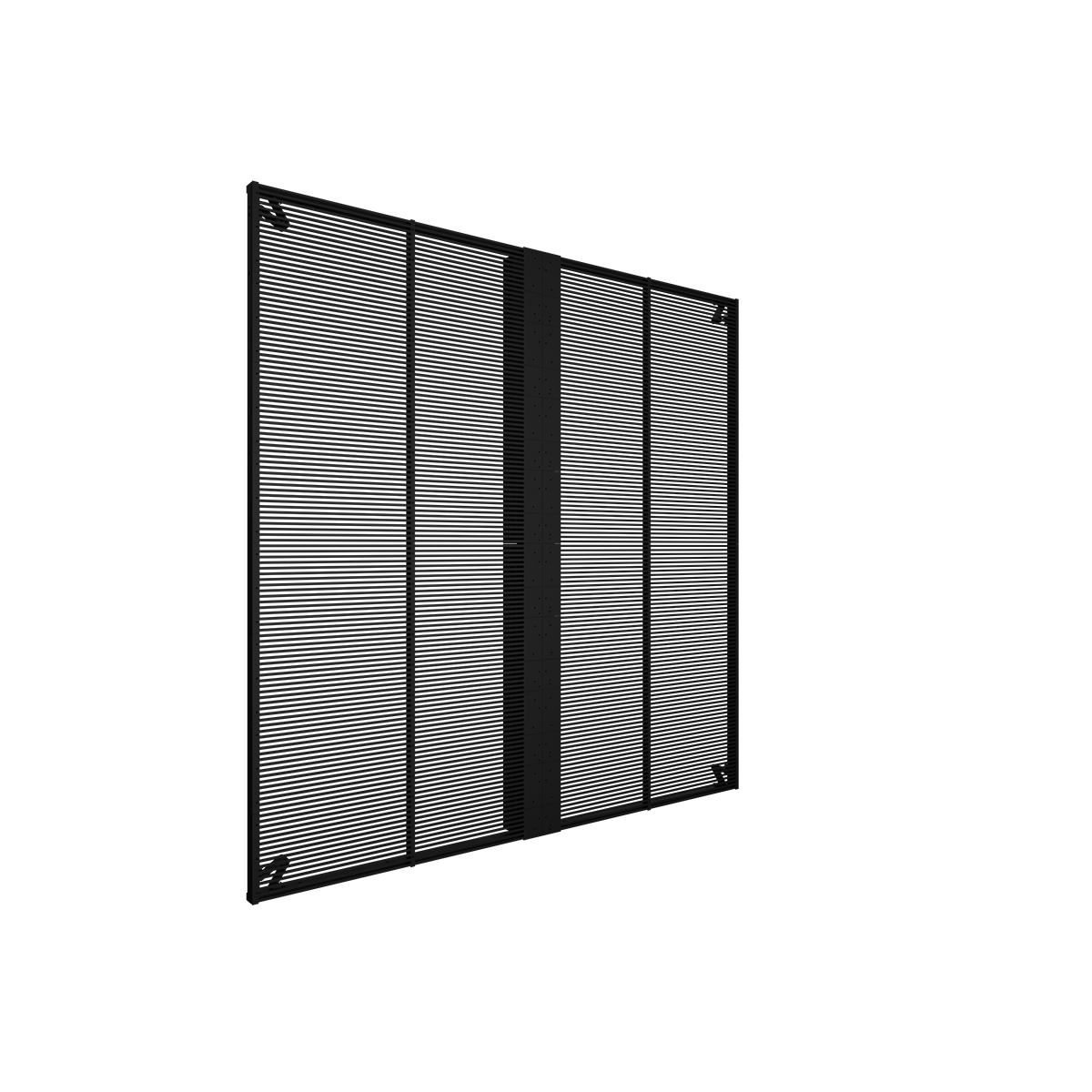In the ever-evolving world of technology, there's always something new and exciting that pushes the boundaries of what we thought was possible. Today, we embark on a thrilling journey to uncover the enigmatic world of Holographic LED Invisible Display OEM—a revolutionary technology that's poised to redefine the way we perceive and interact with visual content.
Introduction: The Rise of Invisible Holography
Imagine a world where screens aren't just flat panels on the wall but invisible interfaces that seamlessly blend into their surroundings, allowing you to see through them while simultaneously showcasing vibrant images and videos. This isn't a far-fetched dream anymore; it's the reality that the Holographic LED Invisible Display OEM technology is bringing to life.
This innovative technology combines the advanced capabilities of LED display technology with holographic principles, creating a visual experience that's both breathtaking and immersive. By embedding LED light sources within transparent materials, these displays can project images and videos with incredible clarity while maintaining high transparency, allowing viewers to see beyond the display itself.
The Technology Behind the Magic
At the heart of the Holographic LED Invisible Display OEM lies a sophisticated blend of cutting-edge technologies. The key lies in the strategic placement of LED light sources on a transparent substrate. These LEDs, carefully orchestrated through advanced electronics, work in harmony to emit light that, when modulated, forms intricate patterns of colors and brightness—the building blocks of our visual experiences.
But it's not just about the LEDs. The true magic happens when holographic principles are integrated into the mix. Holography, in its essence, is the art and science of recording and reconstructing light waves to create three-dimensional images. By recording the phase and amplitude information of light reflected or scattered by an object, a holographic image can be created that captures not just the brightness and color but also the depth and texture of the original scene.
In the case of Holographic LED Invisible Display OEM, this technology is leveraged to generate virtual images that appear to float in mid-air, offering a stunning degree of realism and immersion. Viewers can walk around the display and see the images from different angles, just as they would with a real object, thanks to the accurate reproduction of light waves.
The Benefits of Holographic LED Invisible Display OEM
High Transparency and Unobtrusive Design: The biggest draw of these displays is their ability to blend seamlessly into their surroundings. Whether installed in a store window, a museum exhibit, or even a home, they add a touch of futuristic elegance without intruding on the existing space.
Versatility and Flexibility: The lightweight and compact design of Holographic LED Invisible Display OEM makes them ideal for a wide range of applications. From retail displays to interactive art installations, these displays can be tailored to fit various environments and purposes.
Enhanced Visual Experience: By providing a truly three-dimensional viewing experience, these displays can captivate audiences like never before. The level of realism and depth perception is unparalleled, making them perfect for showcasing products, advertising campaigns, or even artistic creations.
Dynamic Content Capability: The technology supports dynamic content, meaning that it can display moving images and videos with ease. This feature adds a layer of interactivity and engagement, making the viewing experience even more captivating.
Applications and Real-World Examples
The potential applications of Holographic LED Invisible Display OEM are virtually limitless. Here are a few real-world examples that showcase the technology's versatility:
Retail: Imagine a clothing store where customers can "try on" virtual outfits without actually putting them on. With holographic displays, shoppers can get a true sense of how a garment would look and fit, enhancing their shopping experience.
Museums and Art Galleries: Museums can use these displays to showcase artifacts and paintings in a way that brings them to life. Visitors can view pieces from multiple angles, even walking around them, for a more immersive and educational experience.
Advertising and Marketing: Businesses can use holographic displays to create eye-catching advertisements that grab attention and drive engagement. The dynamic and interactive nature of the content makes it difficult for passersby to ignore.
Entertainment: Imagine attending a concert or theater performance where the stage is filled with holographic projections. The performers can seemingly "interact" with the projections, creating a surreal and captivating performance.
The Future of Holographic LED Invisible Display OEM
As technology continues to advance, we can anticipate even more impressive capabilities and applications for Holographic LED Invisible Display OEM. The fusion of advanced LED technology, holographic principles, and innovative software solutions promises to usher in a new era of display technology. Here are a few key aspects of its future development:
Enhanced Resolution and Clarity: With the ongoing miniaturization of LED technology, Holographic LED Invisible Displays will achieve even higher pixel densities, resulting in sharper images and richer colors. This will offer users a more immersive and realistic visual experience.
Expanded Application Scenarios: The flexibility and customizability of Holographic LED Invisible Displays will enable their adoption across a broader range of sectors. From commercial advertising, exhibition displays, and home entertainment to educational training, medical diagnosis, and military simulations, their potential applications are vast. In particular, the rise of the metaverse and intelligent driving industries will further propel their adoption.
Enhanced Interactivity: Future Holographic LED Invisible Displays will prioritize interactive experiences. By integrating touch sensors, voice recognition, gesture control, and other interaction methods, users will be able to engage with the displays more naturally, facilitating instant information transfer and feedback. This heightened interactivity will significantly elevate user experiences and drive the further development of display technology.
Lower Power Consumption and Longer Lifespan: Advancements in LED materials and driving technologies will lead to reduced power consumption and extended lifespans for Holographic LED Invisible Displays. This will help lower operational costs and increase their market competitiveness.
Intelligence and Integration: Future displays will become more intelligent and integrated. By incorporating AI algorithms, big data analysis, and other advanced technologies, displays can automatically adjust display parameters, optimize visual effects, and provide personalized services based on user habits and needs. Moreover, seamless connectivity with other smart devices will enable information interconnection and sharing.
Environmental Protection and Sustainability: As global attention shifts towards environmental protection and sustainability, Holographic LED Invisible Displays will increasingly prioritize eco-friendliness. The use of environmentally friendly materials, reduced energy consumption, and waste minimization will become industry norms. Additionally, research into the recycling and reuse of displays will gain importance.
In conclusion, the future of Holographic LED Invisible Display OEM holds immense potential. With continuous technological advancements and the expansion of application scenarios, these displays will emerge as a significant force driving the evolution of display technology.
















